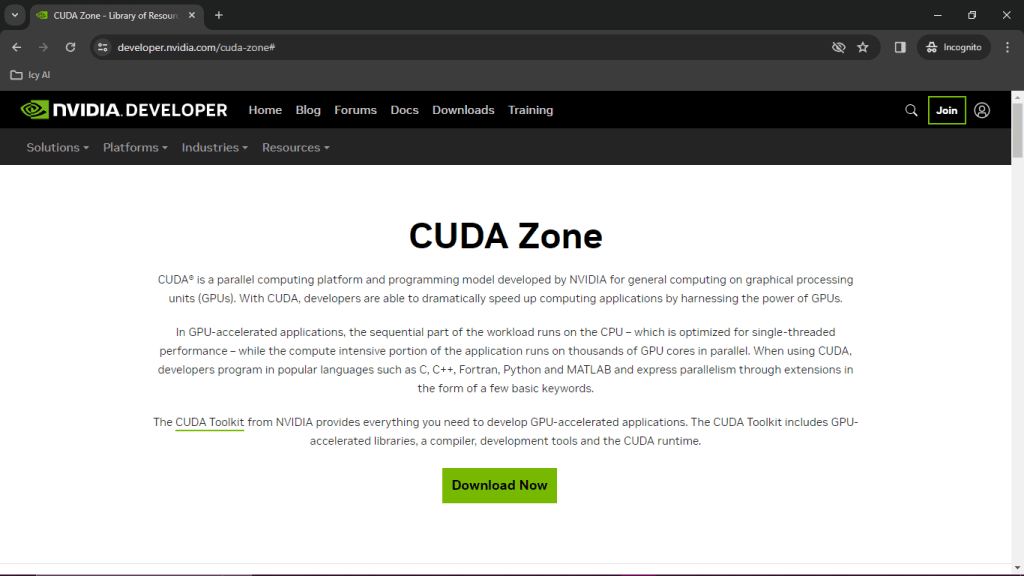Welcome to the world of high-performance rendering, where the combination of Cubvh tools and CUDA technology takes center stage. This comprehensive guide is designed to walk you through the intricacies of Cubvh, a project dedicated to mesh manipulation and rendering using the powerful parallel computing capabilities of CUDA.
Introduction
Rendering is an essential process in the field of computer graphics, requiring both precision and efficiency. With the advent of complex scenes and the need for real-time rendering, CUDA has emerged as a pivotal technology. It leverages the power of Nvidia graphics processing units (GPUs) to accelerate computing tasks.
Understanding Cubvh and CUDA Mesh BVH Tools
Cubvh stands at the intersection of high-fidelity graphics and optimized computation. It refers to a suite of tools that utilize Bounding Volume Hierarchies (BVH), a data structure that accelerates the rendering process by efficiently culling non-visible objects from the rendering pipeline. By harnessing the capabilities of CUDA, Cubvh vastly improves the speed and quality of rendering complex 3D models.
Setting Up Cubvh
Before diving into the transformative world of Cubvh, it’s crucial to lay the foundation with the proper setup. This involves installing CUDA and configuring the Cubvh environment for your specific rendering needs.

The first step is to ensure that you have a compatible Nvidia GPU installed in your system. CUDA is specifically designed to work with Nvidia GPUs, so having the right hardware is essential.
Next, you will need to download and install the CUDA toolkit from the Nvidia website. This toolkit includes the necessary libraries, drivers, and development tools for CUDA programming.
Once the CUDA toolkit is installed, you can set up the Cubvh environment. This involves configuring your development environment, such as setting up the necessary paths and variables. You may also need to install additional dependencies, such as the CUDA compiler (nvcc) and any required libraries for your specific rendering pipeline.
With your Cubvh environment properly set up, you can now start building and using the Cubvh tools for advanced rendering. Cubvh provides a set of libraries and APIs that allow you to manipulate and render 3D meshes efficiently using CUDA.
The core component of Cubvh is the BVH data structure. This data structure organizes the objects in your scene into a hierarchical tree, where each node represents a bounding volume that encloses a group of objects. This allows for efficient culling of non-visible objects during the rendering process, greatly improving performance.
To build a BVH using Cubvh, you will typically start by loading your 3D mesh data into memory. Cubvh provides functions for importing popular file formats, such as OBJ or FBX. Once the data is loaded, you can then generate the BVH using the provided algorithms.

Once the BVH is built, you can use it for efficient rendering. Cubvh provides functions for traversing the BVH and performing ray intersection tests with the objects in your scene. These functions leverage the parallel computing capabilities of CUDA to accelerate the rendering process.
Conclusion
Cubvh, combined with CUDA technology, offers a powerful solution for high-performance rendering. By utilizing Bounding Volume Hierarchies and harnessing the parallel computing capabilities of Nvidia GPUs, Cubvh enables efficient and real-time rendering of complex 3D models.
This guide has provided an overview of Cubvh and its integration with CUDA, as well as the necessary steps to set up and use Cubvh for advanced rendering. By mastering Cubvh, you can unlock the full potential of CUDA and take your rendering capabilities to new heights.
Installing CUDA and Related Software
The installation of CUDA is straightforward. Visit the Nvidia website, download the latest version compatible with your GPU, and follow the installation prompts. Remember to also install the necessary drivers and toolkit which contain valuable libraries and tools.
Configuring Cubvh for Rendering
Once CUDA is ready, setting up Cubvh requires downloading the project from GitHub and familiarizing yourself with its directory structure and build system. Configuration might involve tweaking settings to optimize for your hardware setup, ensuring seamless integration with your workflow.
Working with Mesh Manipulation
Mesh manipulation is a core aspect of 3D rendering. Cubvh provides tools that streamline this process, whether you’re importing, exporting, or transforming mesh data.
Importing and Exporting Mesh Data
Moving mesh data into and out of Cubvh is critical. The software supports various formats, and users should understand the import and export functions to ensure that meshes are correctly processed for rendering.
Manipulating Mesh Geometry
With Cubvh, users can perform a range of geometric transformations on meshes. These manipulations include scaling, rotating, and translating models within the 3D space to fit the desired scene composition.
Applying Textures and Materials
To achieve photorealistic results, applying textures and materials to meshes is essential. Cubvh assists in mapping these visual details onto the geometry, contributing to the final look of rendered objects.
Utilizing CUDA for Parallel Computing
At its heart, CUDA enables parallel computing, which is crucial for speeding up rendering times. By distributing tasks across multiple GPU cores, CUDA allows for substantial performance gains.
Leveraging CUDA for Rendering Efficiency
The use of CUDA translates to a more efficient rendering pipeline. Tasks that would take significant time on a CPU can be executed quickly on a GPU, thanks to the parallel nature of CUDA cores.
Optimizing Performance with CUDA Mesh BVH Tools
Performance optimization is an ongoing task. With Cubvh, users can exploit several techniques to fine-tune their rendering processes, such as adjusting the level of detail or batching operations to minimize overhead.
Advanced Rendering Techniques
Advanced rendering techniques push the boundaries of what’s possible in computer graphics. Cubvh, coupled with CUDA, offers an array of options to explore these frontiers.
Implementing Ray Tracing with Cubvh
Ray tracing is a technique for producing highly realistic lighting by simulating the physical behavior of light. Cubvh facilitates the implementation of ray tracing by managing the complexities of intersecting rays with 3D geometry.
Exploring Real-time Rendering Capabilities
Real-time rendering is vital for applications like video games or simulations. Cubvh’s tools enable developers to achieve high frame rates while maintaining visual fidelity, an impressive feat made possible with CUDA.
Troubleshooting and Optimization
No rendering setup is without its challenges. Troubleshooting and optimization are necessary skills for any developer working with Cubvh and CUDA.
Debugging and Optimizing Rendering Processes
Identifying bottlenecks and resolving issues are part of the optimization process. Cubvh offers debugging tools that provide insights into the rendering pipeline, helping to pinpoint areas for improvement.
Addressing Common Issues with Cubvh
Common issues with Cubvh may include compatibility problems with different GPUs or unexpected behaviors in the rendering output. Understanding how to navigate these issues will ensure a smoother workflow.
How Cubvh Can Help You In Your Rendering Project
Mastering Cubvh and the accompanying CUDA Mesh BVH tools can elevate your rendering projects to new heights. With the right setup, knowledge of mesh manipulation, and optimization techniques, you can harness the full potential of GPU-accelerated rendering.
Last Updated on by Arsh

